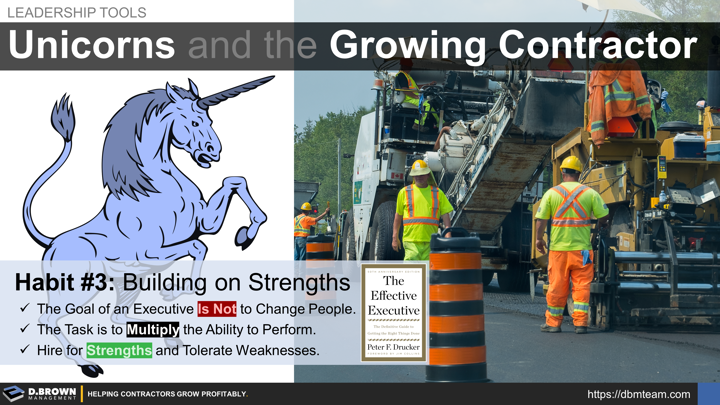If you think you found a unicorn, you may want to look deeper at your screening and selection process because it's probably a false-positive.
The biggest mistake that contractors make when growing is assuming that the organizational structure and job roles will look similar with just more quantities of the same roles.
This is true to a point. For example, the first, second, third, and even fourth Project Manager may be very similar job roles. This is where the inflection point of growth comes in and there are two ways this can be tackled.
- Double-down on the current PM model while continuing to look for a fifth, sixth, and seventh that fit that mold. This can appear to be effective up to a point but will have a breaking point. And at that breaking point, leadership resources are often stretched so thin that there is no time to take the second approach.
- Look at the PM role including all tasks, decisions, and the broader workflows those fall within.
- Determine which tasks and decisions could be done with an entry level role such as a Project Engineer or Project Coordinator.
- Determine which tasks and decisions should best be handled by a manager of the PMs as a way to ensure maximum returns and risk control.
- Determine if some of those tasks and decisions should be done by a different function such as purchasing.
Taking the second approach is much more difficult in the beginning but creates a more scalable business because you are developing a pipeline of talent as well as eliminating single points of failure in a model where the PM is handling nearly all aspects of a project.
In the first approach, doubling in size would require adding in four more PMs. Note that this will massively stretch whoever the PMs are reporting to.
In the second approach, that might look like adding in four PE level roles and one managerial level role so likely the same overall cost but with a lot more resiliency and scalability.
Deciding how to structure your organization best for leadership development is one of the most highly leveraged decisions you will make.
Peter Drucker describes the role of the executive in building a productive team very well in The Effective Executive. He described five habits of effective executives. Habit #3 is that effective executives build on strengths:
- Their own strengths
- The strengths of their superiors
- The strengths of their coworkers
- The strengths of their subordinates
- The strengths in the situation - on what they can do
They do not build on weaknesses. They do not start out with the things they cannot do.
They know that their role is not to change people but rather to multiply their ability to perform by organizing them in a way that their collective strengths are maximally leveraged, and their weaknesses are irrelevant.
Effective executives hire for strengths that make the whole team better and tolerate weaknesses.
There are a couple resources when it comes to hiring effectively that are well worth studying for any manager who is involved in the hiring process. Brad Smart (father) and Geoff Smart (son) have pioneered some of the best predictive hiring practices out there. Both these short talks summarize things pretty well for starters.
Brad Smart - Foolproof Hiring (50 Minutes)
Geoff Smart – Hiring the Right Way (29 Minutes)

